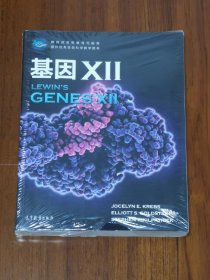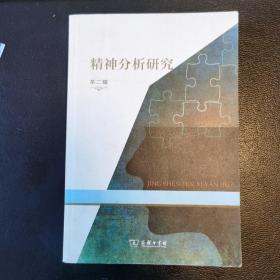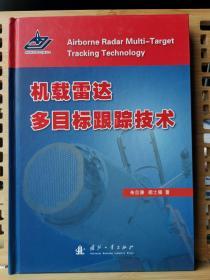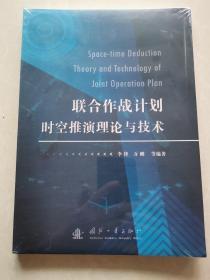
三网融合(英文版)9787519852153
正版图书,可开发票,请放心购买。
¥ 225.52 7.5折 ¥ 300 全新
仅1件
广东广州
认证卖家担保交易快速发货售后保障
作者全球能源互联网发展合作组织
出版社中国电力
ISBN9787519852153
出版时间2020-12
装帧其他
开本其他
定价300元
货号31068798
上书时间2024-07-27
- 店主推荐
- 最新上架
商品详情
- 品相描述:全新
- 商品描述
-
目录
FOREWORD
1 Overview of Network Infrastructure Development
1.1 General Overview
1.1.1 Main Categories
1.1.2 Components
1.1.3 Basic Characteristics
1.1.4 Main Features
1.2 Key Roles
1.2.1 Foundation for Social Development
1.2.2 Engine of Economic Growth
1.2.3 Impetus for High-quality Development
1.2.4 Key to Sustainable Development
1.3 Current Challenges
1.3.1 Resource Sharing
1.3.2 Balanced Development
1.3.3 Planning and Coordination
1.3.4 Network Efficiency
1.3.5 Network Safety Assurance
1.3.6 Environmental Protection
1.3.7 Technical Standards
1.3.8 Policy Mechanisms
1.4 Development Trends
1.4.1 Wide-area Coverage
1.4.2 Digitalization
1.4.3 Intelligentization
1.4.4 High Efficiency
1.4.5 Friendliness
1.4.6 Integration
1.5 Summary
2 Current Status and Development Trends of ETI Networks
2.1 Energy Network
2.1.1 Overview
2.1.2 Coal
2.1.3 Oil
2.1.4 Natural Gas
2.1.5 Electricity
2.1.6 Global Energy Interconnection
2.2 Transportation Network
2.2.1 Development History
2.2.2 Current Development Status
2.2.3 Global Transportation Interconnection
2.3 Information Network
2.3.1 Development History
2.3.2 Current Development Status
2.3.3 Global Information Interconnection
2.4 Summary
3 Theory and Models of ETI Integration
3.1 ETI Networks' Direction of Development
3.2 Theoretical Foundations of ETI Integration
3.2.1 Definition of ETI Integration
3.2.2 Main ETI Network Structures
3.2.3 Five-layer Integrated Model
3.3 Models of ETI Integration
3.3.1 Energy Integration
3.3.2 Infrastructure Integration
3.3.3 Data Integration
3.3.4 Operation Integration
3.3.5 Industry Integration
3.4 Driving Forces of ETI Integration
3.4.1 Reform
3.4.2 Innovation
3.4.3 Efficiency
3.4.4 Policy
3.5 Summary
4 Paradigms and Development Paths of ETI Integration
4.1 Major Paradigms of ETI Integration
4.2 Application Scenarios of ETI Integration
4.2.1 Integrated Urban Utility Tunnel
4.2.2 Multi-station Integration
4.2.3 Shared Posts and Towers
4.2.4 Smart Grid
4.2.5 Power Information Fusion
4.2.6 Green Energy Data Centers
4.2.7 Electric Transportation
4.2.8 Hydrogen-powered Transportation
4.2.9 PV Highways
4.2.10 Smart Transportation
4.2.11 \\\"Power+\\\" Integrated Service Platform
4.2.12 Sea-air Hubs of ETI Integration
4.3 The Development Path of ETI Integration
4.3.1 Urban ETI Integration
4.3.2 National ETI Integration
4.3.3 Transnational ETI Integration
4.4 Summary
5 ETI Integration Technology and Mechanism Innovation
5.1 Innovation
5.1.1 Technological Innovation
5.1.2 Mechanism Innovation
5.2 Key ETI Integration Technologies
5.2.1 Energy Storage Technology
5.2.2 Electric Transportation
5.2.3 Hydrogen-powered Transportation
5.2.4 Maglev Transportation
5.2.5 Wireless Charging
5.2.6 Power Routers
5.2.7 Artificial Intelligence
5.2.8 Big Data
5.2.9 The Internet of Vehicles
5.2.10 Unmanned Driving
5.3 Innovation of Mechanisms for ETI Integration
5.3.1 Planning and Coordination
5.3.2 Construction and Operation
5.3.3 Financial Investment
5.3.4 Alignment of Standards
5.3.5 Policy Guarantees
5.3.6 International Cooperation
5.4 Summary
6 ETI Integration to Create a Better World
6.1 A Seismic Shift in Industrial Development
6.2 Rapid Global Economic Development
6.3 Notable Ecological/Environmental Improvements
6.4 Appreciable Improvements in Standards of Living
6.5 An Astonishing Step for Human Civilization
6.6 Summary
REFERENCES
内容摘要
本书是《三网融合》的英文版。本书在回顾三网各自发展历程、分析未来趋势基础上,创新三网融合理论框架,全面阐述三网融合的必然性、可行性和驱动力,总结梳理三网融合创新实践,研究提出三网融合发展路径,分析技术创新和机制创新的重点领域和发展方向,展望三网融合给经济社会发展带来的巨大改变。全书共分为六章:第一章介绍网络型基础设施的总体概况及对经济社会发展的关键作用,分析三网面临的主要挑战和未来发展趋势。
第二章回顾三网各自发展历程,分析发展现状、主要挑战、发展趋势,展望三网未来的功能形态、内涵特征和重大价值。
第三章分析三网融合发展方向和理论基础,创新提出四大融合驱动力(变革、
创新、效率、政策)、五层
融合结构(动力层、物理层
,数据层、应用层、业态层
)、五种融合模式(能源、
设施、数据、业务、产业),形成三网融合“4-5-5”理论架构。
第四章研究三网融合形态、场景与发展路径,分析三网融合4类形态和12类应用场景,并从城市、国内、
跨国等层面提出三网融合的发展路径及建设重点。
第五章阐述三网融合技
术和机制创新方向,重点分析三网融合十大关键技术.新进展和发展前景,并提出规划统筹、建设运营、金融投资、标准协同、政策保障、国际合作等六大创新机制。
第六章从产业融合、经济发展、环境改善、生活提升、文明进步等五方面,展望三网融合对未来世界的重大影响和推动作用。
— 没有更多了 —





















以下为对购买帮助不大的评价